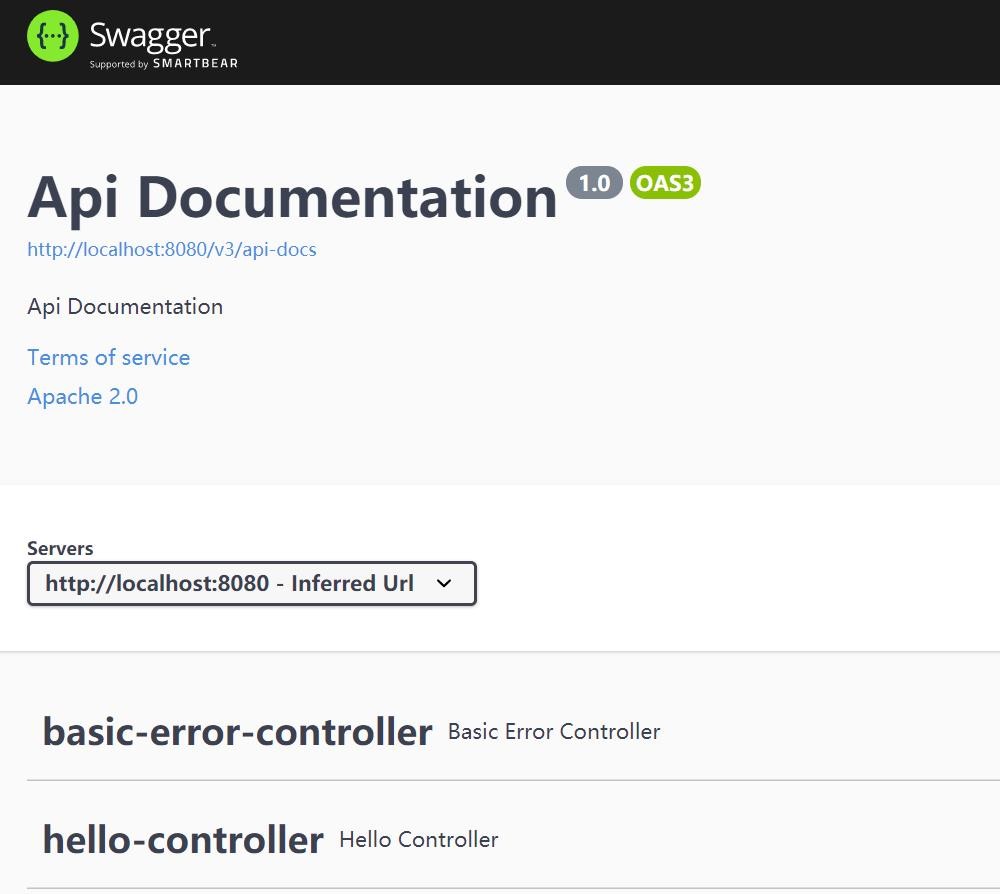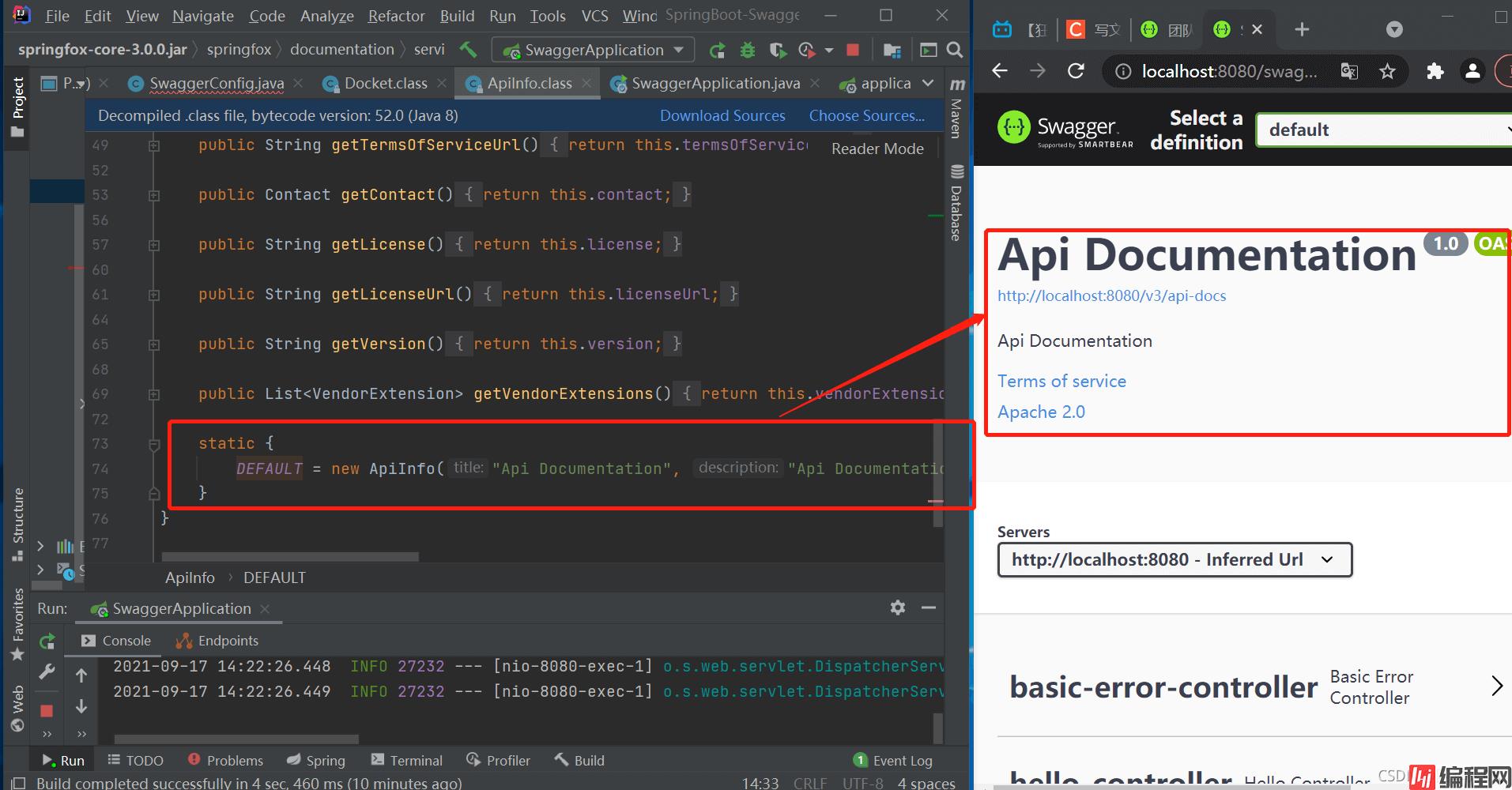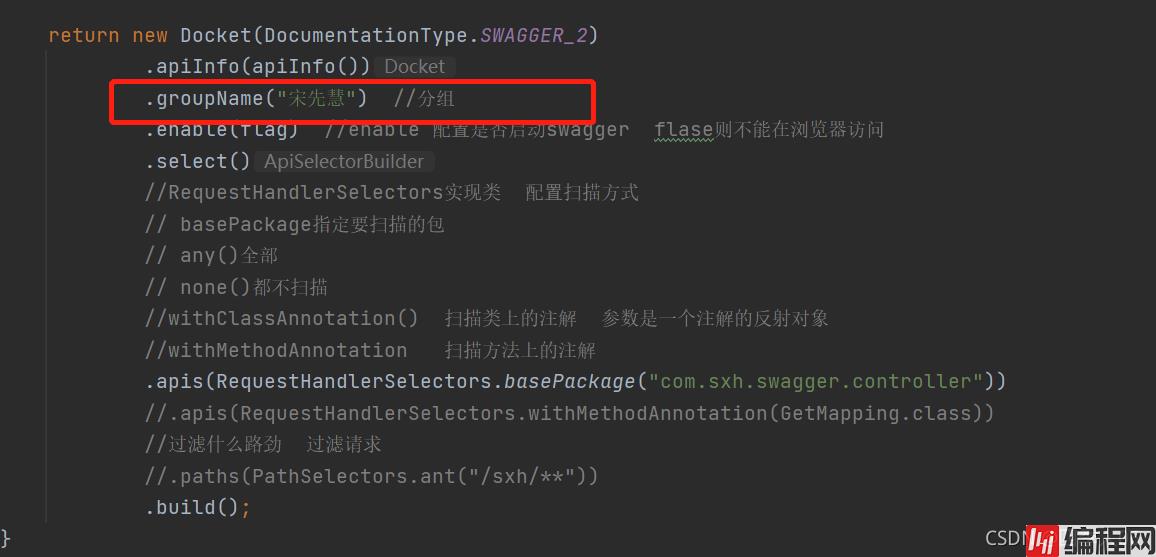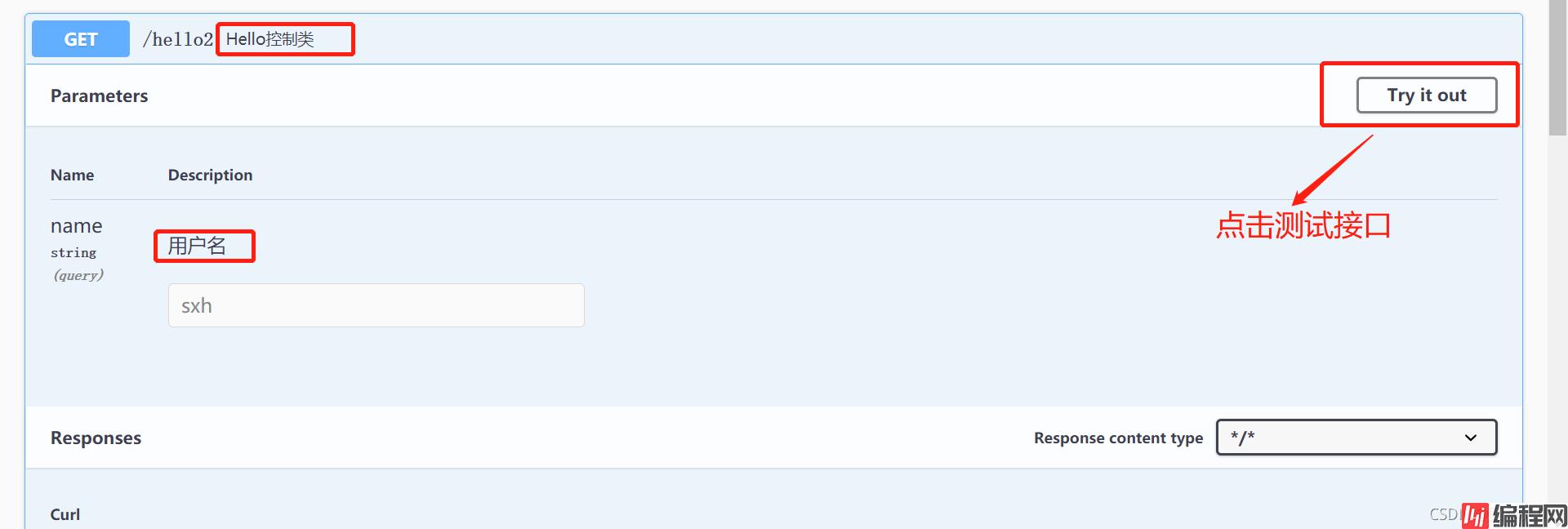Python 官方文档:入门教程 => 点击学习
目录swagger的作用与概念在项目中使用swagger配置swaggerapiInfo 配置swagger配置扫描接口配置api文档分组多个分组实体类配置Swagger的作用与概念
Swagger官网,点此进入
在前后端分离时代,我们需要实时自动更新接口信息,和测试接口,实现前后端分离式开发,swagger因此产生
以下以3.0.0依赖为例
<!--swagger 相关组件-->
<dependency>
<groupId>io.springfox</groupId>
<artifactId>springfox-swagger2</artifactId>
<version>3.0.0</version>
</dependency>
<dependency>
<groupId>io.springfox</groupId>
<artifactId>springfox-swagger-ui</artifactId>
<version>3.0.0</version>
</dependency>
<dependency>
<groupId>io.springfox</groupId>
<artifactId>springfox-boot-starter</artifactId>
<version>3.0.0</version>
</dependency>
@RestController
public class HelloController {
@RequestMapping(value = "/hello")
public String hello(){
return "hello";
}
}
@Configuration
@EnableSwagger2 //开启swagger2
public class SwaggerConfig {
}
然后访问Http://localhost:8080/swagger-ui/index.html
你就能看到如下界面,为swagger文档

先来看看底层的代码,了解一下


@Configuration
@EnableSwagger2 //开启swagger2
public class SwaggerConfig {
@Bean
public Docket docket(){
return new Docket(DocumentationType.SWAGGER_2).apiInfo(apiInfo());
}
//配置swagger信息apiInfo
private ApiInfo apiInfo(){
//作者信息
Contact contact = new Contact("宋先慧", "https://blog.csdn.net/sxh06", "xianhuisong@yeah.net");
return new ApiInfo(
"宋先慧的Api Documentation",
"学习swagger没有尽头",
"1.0",
"urn:tos",
contact,
"Apache 2.0",
"http://www.apache.org/licenses/LICENSE-2.0",
new ArrayList());
}
}
@Configuration
@EnableSwagger2 //开启swagger2
public class SwaggerConfig {
// @Bean
// public Docket docket1(){
// return new Docket(DocumentationType.SWAGGER_2).groupName("分组二");
// }
@Bean
public Docket docket(Environment environment){
Profiles profiles=Profiles.of("dev");
//获取项目的环境
boolean flag=environment.acceptsProfiles(profiles);
return new Docket(DocumentationType.SWAGGER_2)
.apiInfo(apiInfo())
.groupName("宋先慧") //分组
.enable(flag) //enable 配置是否启动swagger flase则不能在浏览器访问
.select()
//RequestHandlerSelectors实现类 配置扫描方式
// basePackage指定要扫描的包
// any()全部
// none()都不扫描
//withClassAnnotation() 扫描类上的注解 参数是一个注解的反射对象
//withMethodAnnotation 扫描方法上的注解
.apis(RequestHandlerSelectors.basePackage("com.sxh.swagger.controller"))
//.apis(RequestHandlerSelectors.withMethodAnnotation(GetMapping.class))
//过滤什么路劲 过滤请求
//.paths(PathSelectors.ant("/sxh/**"))
.build();
}
//配置swagger信息apiInfo
private ApiInfo apiInfo(){
//作者信息
Contact contact = new Contact("宋先慧", "https://blog.csdn.net/sxh06", "xianhuisong@yeah.net");
return new ApiInfo(
"宋先慧的Api Documentation",
"学习swagger没有尽头",
"1.0",
"urn:tos",
contact,
"Apache 2.0",
"http://www.apache.org/licenses/LICENSE-2.0",
new ArrayList());
}
}
如果我只希望在生成环境使用swagger,在正式环境不使用swagger怎么解决?(enable=false|true)

配置多个Docket 实例即可
@Bean
public Docket docket1(){
return new Docket(DocumentationType.SWAGGER_2).groupName("分组一");
}
@Bean
public Docket docket2(){
return new Docket(DocumentationType.SWAGGER_2).groupName("分组二");
}`





到此这篇关于Java Swagger技术使用指南的文章就介绍到这了,更多相关Java Swagger内容请搜索编程网以前的文章或继续浏览下面的相关文章希望大家以后多多支持编程网!
--结束END--
本文标题: Java Swagger技术使用指南
本文链接: https://lsjlt.com/news/137273.html(转载时请注明来源链接)
有问题或投稿请发送至: 邮箱/279061341@qq.com QQ/279061341
2024-03-01
2024-03-01
2024-03-01
2024-02-29
2024-02-29
2024-02-29
2024-02-29
2024-02-29
2024-02-29
2024-02-29
回答
回答
回答
回答
回答
回答
回答
回答
回答
回答
0